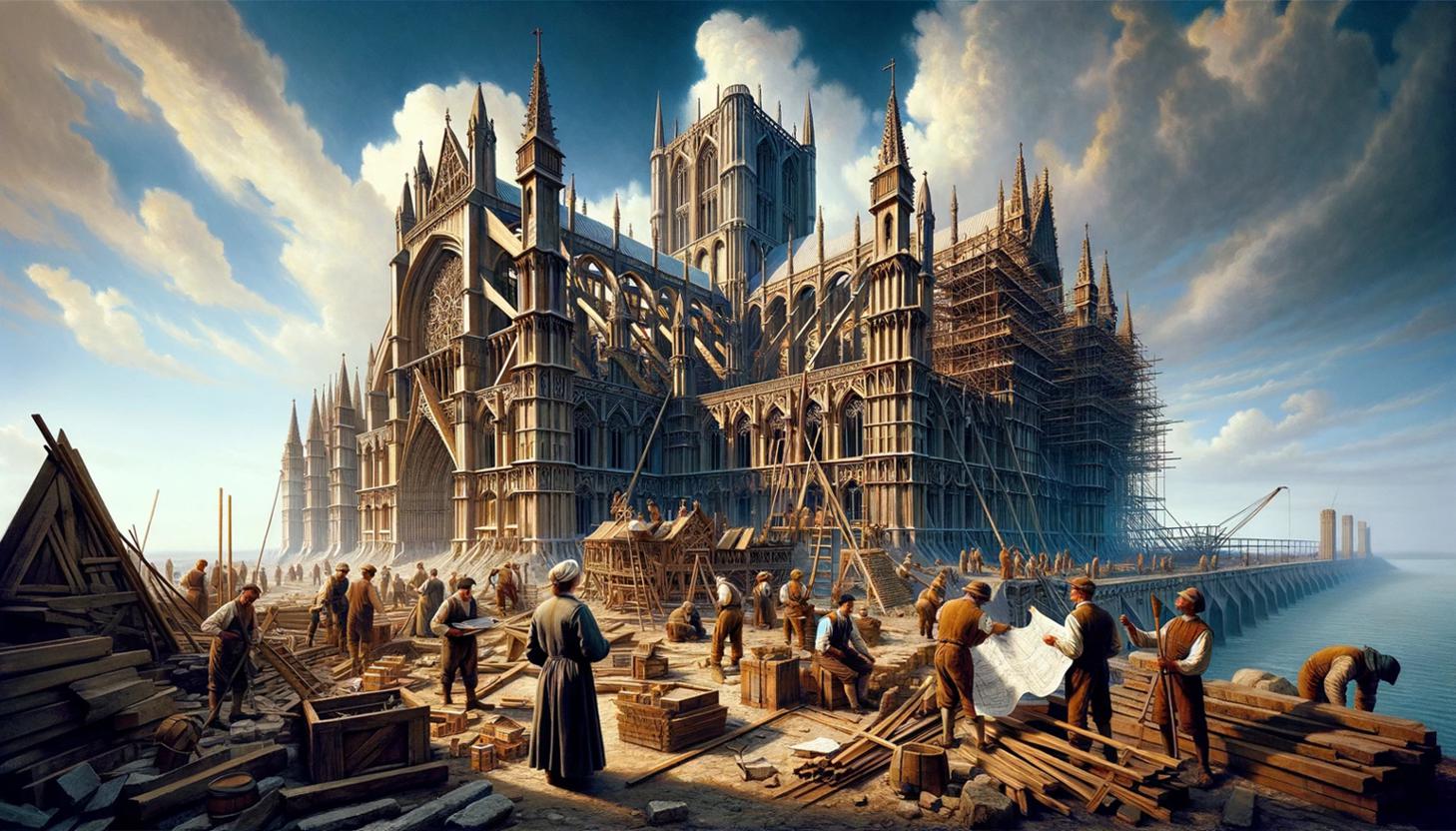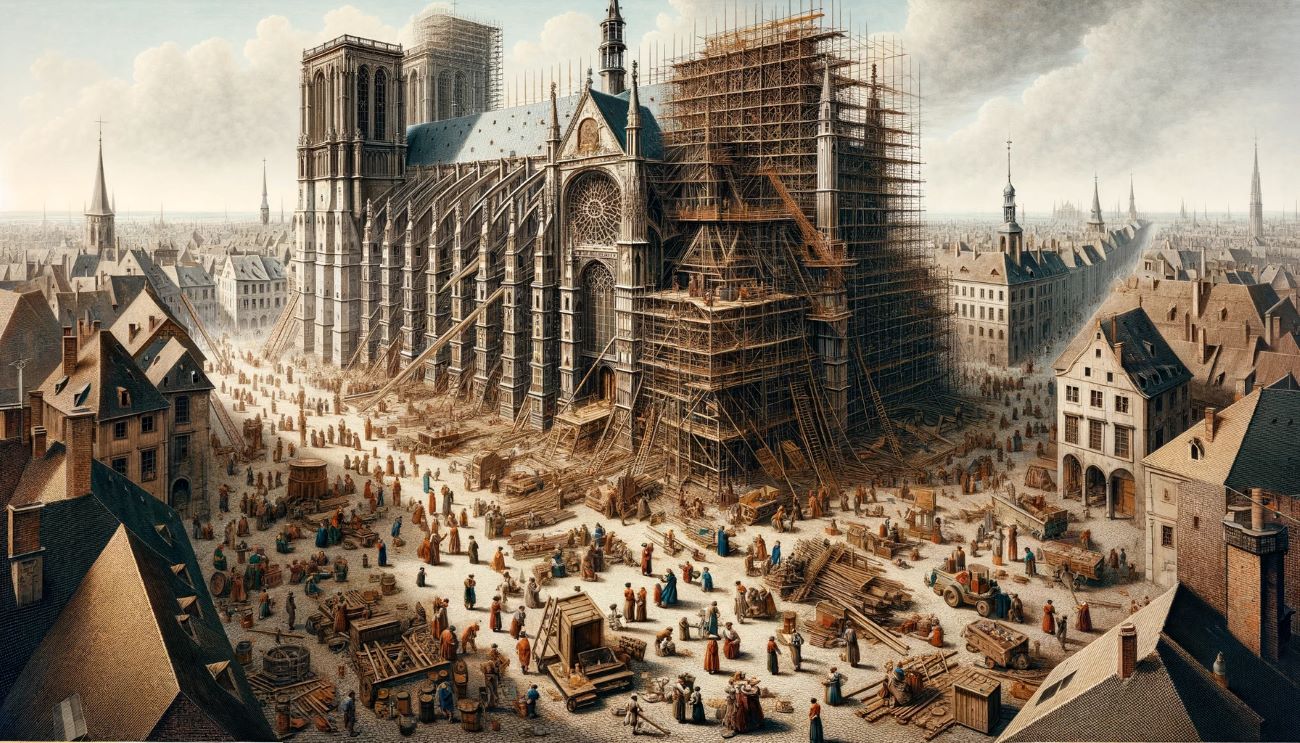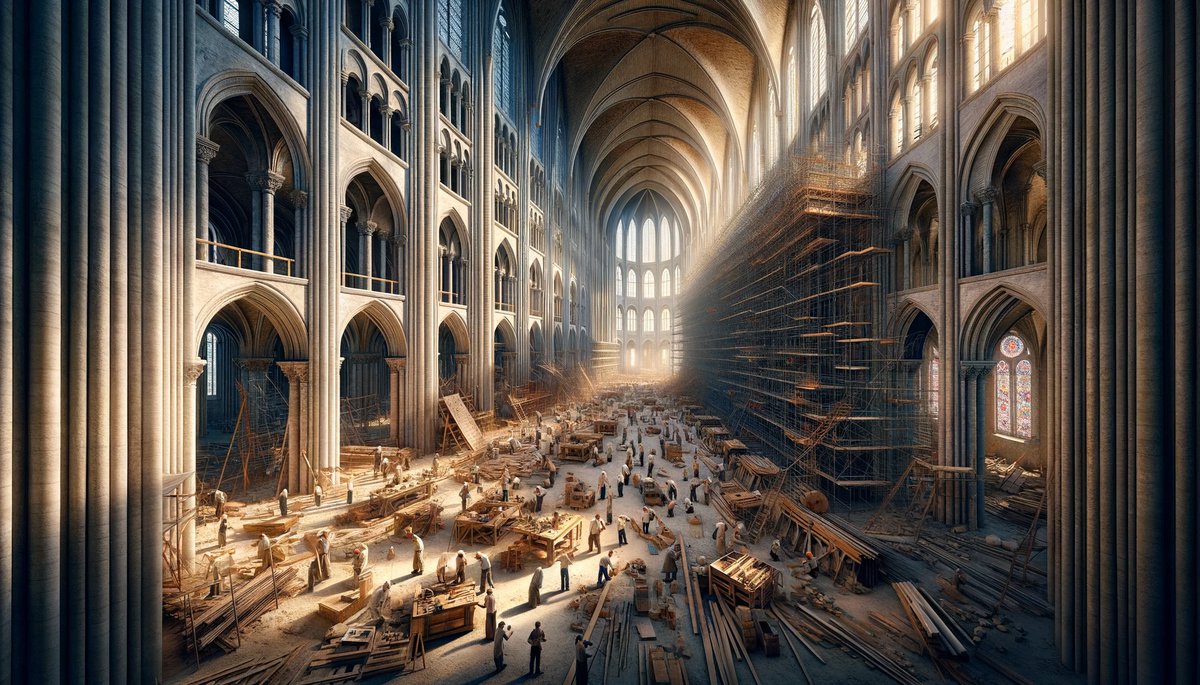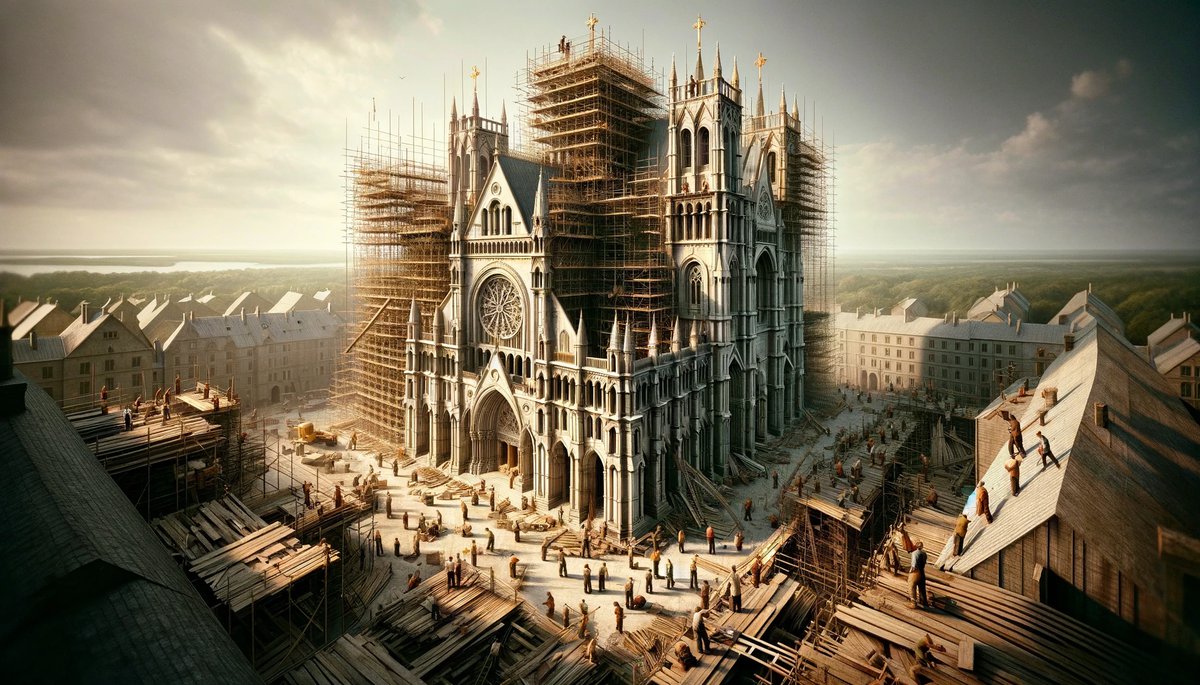Home>Arts and Culture>St. Basil’s Cathedral: Why Was It Built


Arts and Culture
St. Basil’s Cathedral: Why Was It Built
Published: February 18, 2024
Ericka Andersen, an editor at Christian.net, expertly merges digital strategy with content creation, focusing on faith and societal issues. Her communication skills enhance the platform's engaging narratives, fostering meaningful dialogue on belief's impact on society.
Explore the fascinating history and significance of St. Basil's Cathedral, a masterpiece of arts and culture, and uncover the reasons behind its construction. Discover the architectural marvel that has captivated visitors for centuries.
(Many of the links in this article redirect to a specific reviewed product. Your purchase of these products through affiliate links helps to generate commission for Christian.net, at no extra cost. Learn more)
Table of Contents
Introduction
St. Basil's Cathedral, also known as the Cathedral of Vasily the Blessed, stands as an iconic symbol of Russia's rich history and architectural prowess. Situated at the heart of Moscow's Red Square, this magnificent structure has captivated the imagination of visitors from around the world for centuries. Its vibrant, colorful domes and intricate designs evoke a sense of wonder and curiosity, drawing countless admirers to explore its enigmatic past and cultural significance.
The cathedral's construction was commissioned by Tsar Ivan the Terrible in the mid-16th century to commemorate the capture of the Tatar stronghold of Kazan. The legend surrounding its creation adds an air of mystique to the cathedral, as it is said that Ivan the Terrible ordered the architects to be blinded to prevent them from replicating such a masterpiece elsewhere. Whether this tale is rooted in truth or myth, it adds to the allure of St. Basil's Cathedral, sparking intrigue and fascination among those who encounter its enchanting presence.
As we delve into the historical background, architectural design, religious significance, and political symbolism of St. Basil's Cathedral, we will unravel the layers of history and culture that have shaped this extraordinary landmark. Join us on a journey through time and explore the captivating story behind the creation of one of the world's most renowned architectural marvels.
Read more: What Is The St. Basil’s Cathedral
Historical Background
St. Basil's Cathedral, a masterpiece of Russian architecture, has a historical narrative as captivating as its vibrant domes and intricate designs. Commissioned by Tsar Ivan the Terrible in the mid-16th century, the cathedral's construction was closely linked to a significant event in Russian history. It was built to commemorate the capture of the Tatar stronghold of Kazan, a triumph that marked a pivotal moment in the country's history.
The exact origins of the cathedral's design and the identities of its architects remain shrouded in mystery, adding an air of intrigue to its history. Legend has it that Ivan the Terrible was so enamored by the cathedral's beauty that he ordered the architects to be blinded, ensuring that they could never replicate such a masterpiece elsewhere. While this tale may be more myth than reality, it underscores the cathedral's profound impact on those who witnessed its splendor.
The construction of St. Basil's Cathedral spanned from 1555 to 1561, and its original purpose was to serve as a symbol of victory and a place of worship. The cathedral's unique and unconventional design, featuring nine individual chapels arranged around a tenth central chapel, was a departure from the traditional architectural styles of the time. Each of the chapels was dedicated to a specific saint, contributing to the cathedral's distinctive appearance and spiritual significance.
Throughout its history, St. Basil's Cathedral has endured various trials and tribulations, including fires, wars, and periods of neglect. However, it has consistently stood as a resilient testament to the enduring spirit of the Russian people and their unwavering commitment to preserving their cultural heritage.
Today, St. Basil's Cathedral continues to stand as a symbol of Russia's rich history and architectural ingenuity, attracting visitors from across the globe who seek to immerse themselves in its timeless allure. Its historical significance, coupled with its breathtaking beauty, ensures that it remains an enduring icon that transcends time and continues to inspire awe and wonder in all who behold it.
Architectural Design
The architectural design of St. Basil's Cathedral is a testament to the boundless creativity and ingenuity of its creators. This iconic structure, with its vibrant domes and intricate details, stands as a masterpiece of Russian architecture, captivating the imagination of all who behold it.
The cathedral's design is characterized by a strikingly unconventional layout, featuring nine individual chapels arranged around a tenth central chapel. Each of these chapels is crowned by a unique and elaborately adorned dome, creating a visually stunning ensemble that defies traditional architectural norms. The vibrant colors and intricate patterns adorning the domes further contribute to the cathedral's mesmerizing appearance, evoking a sense of enchantment and wonder.
The central chapel, dedicated to the Intercession of the Virgin, serves as the focal point of the cathedral's design. Its soaring height and ornate embellishments exemplify the grandeur and spiritual significance of the structure. Surrounding this central chapel, the smaller chapels, each dedicated to a specific saint, add a layer of complexity and diversity to the overall architectural composition.
The interplay of colors, shapes, and textures within the cathedral's design reflects a harmonious blend of Russian architectural traditions and influences from the Byzantine and Asian cultures. The use of vibrant hues, including shades of blue, green, and gold, creates a visually captivating mosaic that symbolizes the richness of Russian artistic heritage.
The intricate details adorning the cathedral's façade, including ornate carvings, decorative tiles, and elaborate patterns, showcase the unparalleled craftsmanship and attention to detail exhibited by the artisans of the time. Every element of the design, from the meticulously crafted domes to the intricately adorned walls, contributes to the cathedral's status as a true architectural marvel.
St. Basil's Cathedral stands as a living testament to the creative vision and technical prowess of its architects and artisans. Its enduring legacy continues to inspire awe and admiration, serving as a timeless reminder of the remarkable achievements of Russian architecture and the enduring power of human creativity.
The architectural design of St. Basil's Cathedral transcends the boundaries of time and culture, leaving an indelible impression on all who have the privilege of experiencing its breathtaking beauty. It stands as a testament to the human spirit's capacity for innovation and artistic expression, inviting visitors to immerse themselves in the captivating world of Russian architectural brilliance.
Religious Significance
The religious significance of St. Basil's Cathedral extends far beyond its architectural splendor, encompassing a profound spiritual legacy that has endured for centuries. As a place of worship and pilgrimage, the cathedral holds deep significance within the Russian Orthodox tradition, serving as a testament to the enduring faith and devotion of the Russian people.
At the heart of St. Basil's Cathedral lies the central chapel, dedicated to the Intercession of the Virgin. This sacred space, with its soaring domes and ornate embellishments, stands as a focal point of reverence and contemplation. The Intercession of the Virgin, also known as the Protection of the Mother of God, holds a special place in Orthodox Christian theology, symbolizing the intercessory role of the Virgin Mary and her divine protection over believers.
The surrounding chapels, each dedicated to a specific saint, further enrich the religious tapestry of the cathedral. These individual sanctuaries, adorned with vibrant colors and intricate designs, provide spaces for prayer, reflection, and veneration of the saints to whom they are dedicated. The presence of these chapels within the cathedral's architectural ensemble underscores the interconnectedness of faith, art, and spirituality in Russian Orthodox tradition.
Throughout its history, St. Basil's Cathedral has served as a site of pilgrimage and religious observance, drawing devout worshippers and curious visitors alike. The cathedral's significance as a place of spiritual pilgrimage is deeply rooted in the traditions of the Russian Orthodox Church, offering a sacred space for believers to seek solace, inspiration, and divine connection.
The religious symbolism woven into the architectural design of St. Basil's Cathedral reflects the profound influence of Orthodox Christian beliefs and traditions on Russian culture and identity. The vibrant domes, intricate iconography, and sacred imagery evoke a sense of awe and reverence, inviting visitors to experience the transcendent beauty of Orthodox spirituality.
As a living testament to the enduring legacy of Russian Orthodox faith, St. Basil's Cathedral continues to inspire wonder and reverence, serving as a timeless beacon of spiritual devotion and artistic expression. Its religious significance transcends the boundaries of time and culture, inviting all who enter its hallowed halls to embark on a journey of contemplation, discovery, and spiritual enlightenment.
The religious significance of St. Basil's Cathedral stands as a testament to the enduring power of faith and the profound impact of religious expression on the cultural heritage of Russia. It serves as a living testament to the enduring legacy of Russian Orthodox faith, inspiring wonder and reverence, and inviting all who enter its hallowed halls to embark on a journey of contemplation, discovery, and spiritual enlightenment.
Political Symbolism
The iconic St. Basil's Cathedral transcends its role as a religious and architectural marvel to embody profound political symbolism deeply rooted in Russia's history. Commissioned by Tsar Ivan the Terrible to commemorate the capture of Kazan and serve as a symbol of Russian victory, the cathedral's construction was a deliberate political statement, asserting the might and triumph of the Russian state.
The unconventional and striking design of St. Basil's Cathedral, with its vibrant domes and intricate details, reflects the political aspirations of the era. Each of the cathedral's nine chapels, dedicated to specific saints, was intended to symbolize the conquest of Kazan and the subsequent unification of the Russian lands under Ivan the Terrible's rule. The architectural ensemble served as a visual representation of the tsar's authority and the consolidation of power, projecting an image of strength and grandeur to both internal and external audiences.
Furthermore, the cathedral's location at the heart of Moscow's Red Square, a central hub of political and cultural activity, underscored its significance as a political symbol. It served as a constant reminder of the tsar's triumph and the enduring power of the Russian state, instilling a sense of national pride and unity among the populace.
Throughout its history, St. Basil's Cathedral has been intertwined with pivotal political events, serving as a backdrop for coronations, religious processions, and state ceremonies. Its presence in the heart of Moscow's political landscape has solidified its role as a potent symbol of Russian identity and sovereignty, transcending its religious origins to become an enduring emblem of national pride and resilience.
Even in the modern era, St. Basil's Cathedral continues to embody political symbolism, standing as a powerful representation of Russia's rich historical legacy and unwavering spirit. Its enduring presence serves as a reminder of the nation's resilience in the face of adversity and its enduring commitment to preserving its cultural and political heritage.
In essence, St. Basil's Cathedral stands as a living testament to the intricate interplay between politics, culture, and architecture, weaving a narrative of triumph, power, and national identity that continues to resonate through the annals of Russian history.
Read more: Why Was The Milan Cathedral Built
Conclusion
In conclusion, St. Basil's Cathedral stands as a timeless testament to the enduring spirit of Russian history, culture, and architectural ingenuity. From its enigmatic origins to its vibrant domes and intricate design, the cathedral embodies a rich tapestry of historical, religious, and political significance that continues to captivate the hearts and minds of visitors from around the world.
The cathedral's historical background, rooted in the triumphs and tribulations of Russia's past, serves as a compelling narrative of resilience and cultural heritage. Its construction, commissioned by Tsar Ivan the Terrible to commemorate the capture of Kazan, reflects a pivotal moment in Russian history and the enduring legacy of the nation's triumphs.
The architectural design of St. Basil's Cathedral, with its unconventional layout and vibrant colors, stands as a testament to the boundless creativity and ingenuity of its creators. The intricate details adorning the cathedral's façade showcase the unparalleled craftsmanship and attention to detail exhibited by the artisans of the time, leaving an indelible mark on the annals of architectural history.
The religious significance of the cathedral, deeply rooted in Orthodox Christian traditions, invites visitors to embark on a journey of spiritual contemplation and reverence. The central chapel, dedicated to the Intercession of the Virgin, serves as a focal point of devotion, while the surrounding chapels offer spaces for prayer, reflection, and veneration of the saints.
Furthermore, St. Basil's Cathedral embodies profound political symbolism, serving as a potent representation of Russian identity, triumph, and resilience. Its presence in the heart of Moscow's political landscape underscores its enduring role as a symbol of national pride and unity, transcending its religious origins to become an enduring emblem of political heritage.
In essence, St. Basil's Cathedral transcends the boundaries of time and culture, inviting visitors to immerse themselves in the captivating world of Russian history, spirituality, and political legacy. Its enduring allure continues to inspire awe and wonder, ensuring that it remains an iconic symbol of Russia's rich cultural heritage for generations to come.














